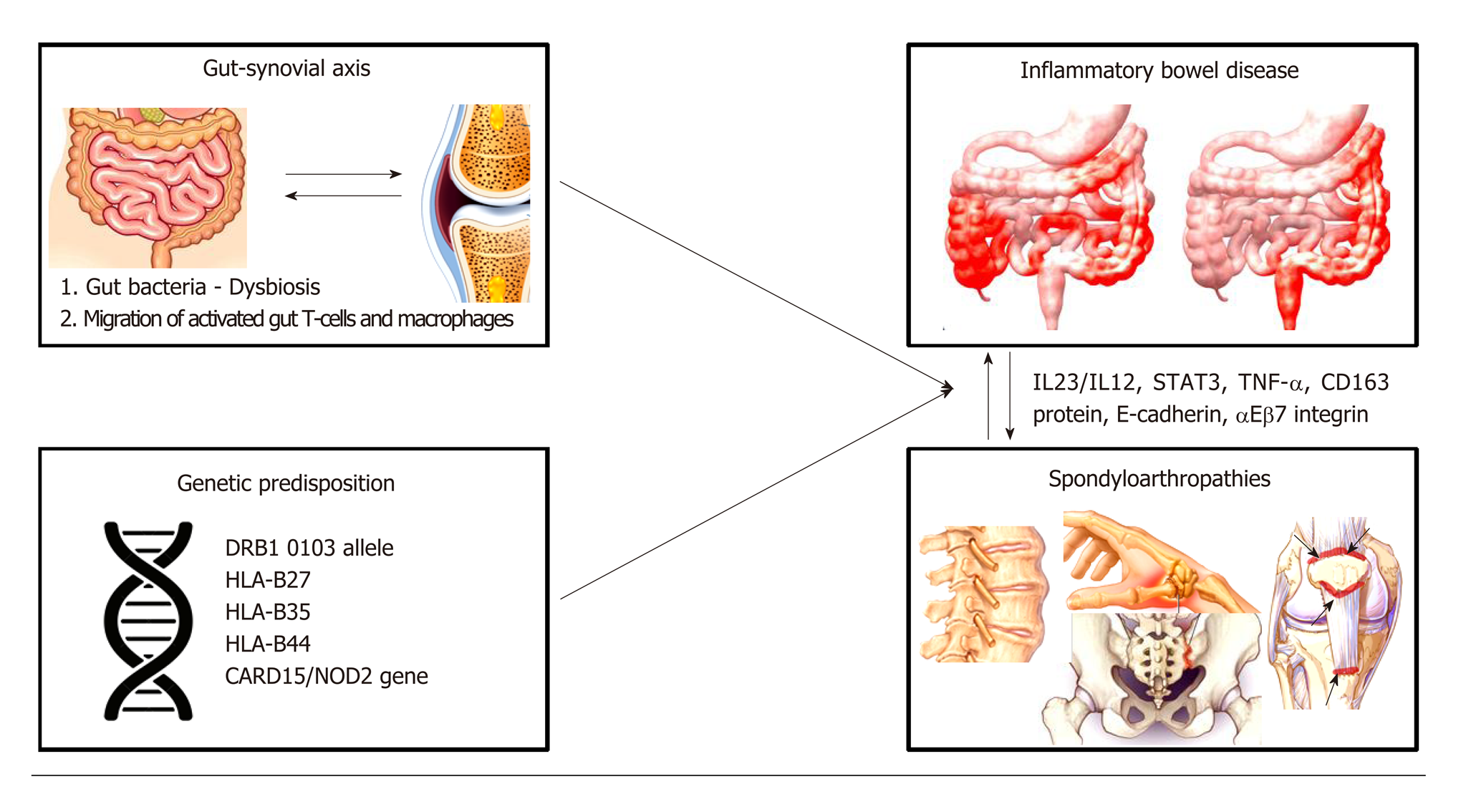Copyright
©The Author(s) 2019.
World J Gastroenterol. May 14, 2019; 25(18): 2162-2176
Published online May 14, 2019. doi: 10.3748/wjg.v25.i18.2162
Published online May 14, 2019. doi: 10.3748/wjg.v25.i18.2162
Figure 1 Pathogenic mechanisms linking gut and joint inflammation.
The pathogenic link between spondyloarthropathies (SpAs) and inflammatory bowel disease (IBD) involves the so-called ‘’gut-synovial axis’’ hypothesis. Various environ mental (gut bacteria-dysbiosis) and host factors (migration of activated gut-T cells and macrophages) leading to initiation of inflammation in genetically predisposed individuals may act as triggers of inflammatory responses against gut and joints components. IBD patients carrying specific human leukocyte antigens (HLA) alleles (such as DRB1 0103 allele, HLA-B27, HLA-B35, HLA-B44) and mutations of the CARD15/NOD2 gene are at higher risk of developing SpAs. Recently, up-regulation of adhesion molecules (E-cadherin, αEβ7 integrin), increased levels of pro-inflammatory cytokines (tumor necrosis factor-α), macrophages expressing CD163 protein, interleukin (IL)-12/IL-23 signaling pathway and signal transducer and activator of transcription 3 protein have also been implicated in the pathophysiology of SpAs in IBD patients. IL: Interleukin; STAT: Signal transducer and activator of transcription; TNF: Tumor necrosis factor; HLA: Human leukocyte antigen; CARD15: Caspase recruitment domain-containing protein 15; NOD: Nucleotide-binding oligomerization domain-containing protein 2.
- Citation: Fragoulis GE, Liava C, Daoussis D, Akriviadis E, Garyfallos A, Dimitroulas T. Inflammatory bowel diseases and spondyloarthropathies: From pathogenesis to treatment. World J Gastroenterol 2019; 25(18): 2162-2176
- URL: https://www.wjgnet.com/1007-9327/full/v25/i18/2162.htm
- DOI: https://dx.doi.org/10.3748/wjg.v25.i18.2162









